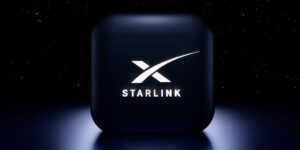SpaceX’s Starlink unit is planning to deploy thousands of W-band Low Earth Orbit (LEO) satellites as part of its satellite internet network. The network, known as ESIAFI II, will consist of 29,988 satellites in 288 orbital planes at various altitudes between 350 and 614 kilometers. These satellites will utilize W-band frequencies for both fixed and mobile satellite services.
The W-band operates in the frequency range of 75-110 GHz, and it has been previously trialed for 5G backhaul by companies like Ericsson. SpaceX’s existing Starlink satellites use the Ka- and Ku-bands, and the company has also received permission for thousands of V-band satellites. The satellites are equipped with lasers to facilitate inter-satellite communication in orbit at speeds of up to 1 Gbps.
Starlink has faced obstacles in its plan to launch several satellites. NASA, in 2022, raised concerns that SpaceX’s plan to send another 30,000 Starlink satellites into orbit would lead to “substantial congestion,” increase the potential for collisions, and interfere with the agency’s activities.
In addition to expanding its satellite network, Starlink has listed a new direct-to-cell service on its website. This service will enable customers to access text, voice, and data for LTE phones globally. Text services are expected to be available from 2024, while voice, data, and IoT services are planned for 2025. Starlink has listed global partners such as T-Mobile USA, Rogers, KDDI, Optus, One NZ, and Salt, who will offer reciprocal global access in partner nations.

SpaceX has faced opposition from incumbent telecom companies like AT&T and the Rural Wireless Association (RWA) regarding its testing of direct-to-cell services in the US. Despite opposition, Starlink is expanding its services across various industries, including maritime and cruise lines. Shipping giant Maersk is deploying Starlink across its fleet of more than 330 container vessels, with the rollout expected to be completed by Q1 2024. Cruise line provider Regent Seven Seas Cruises has deployed Starlink on its Seven Seas Mariner ship and plans to equip its newest ship, the Seven Seas Grandeur, with high-speed Internet before its launch in November. Additionally, Israel is in discussions with SpaceX to use Starlink services, particularly to benefit community leaders in conflict zone settlements.
These developments highlight the growing interest and competition in the satellite-based internet and communication space.





